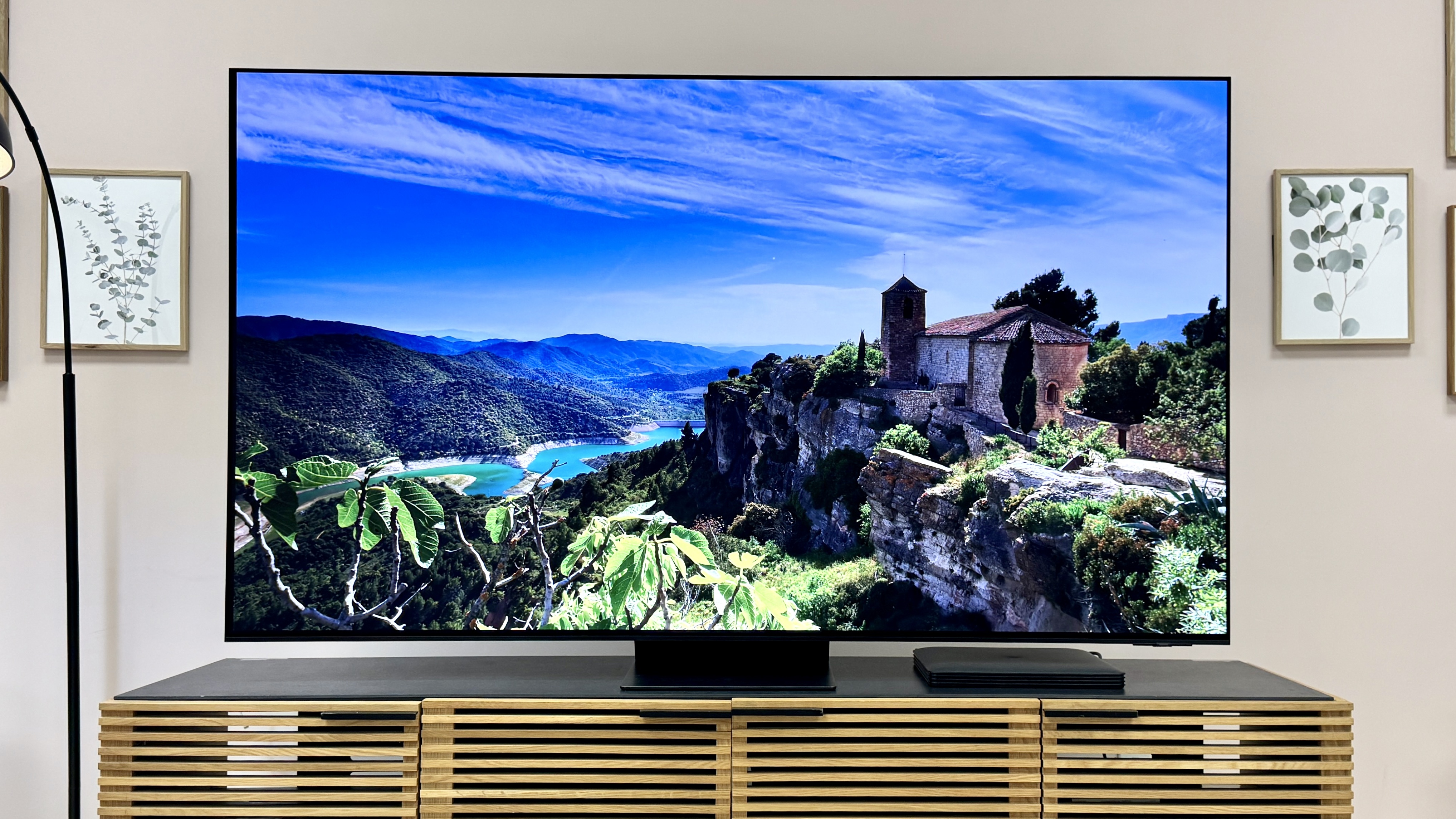
There's a reason why TV manufacturers (specifically, those who make OLED TVs) have't made matte screens to battle annoying glare. While many companies may claim to use some versions of anti-reflective treatments, the majority of mainstream TVs still look glossy. To actually make a TV "glare-free," you'd need to add a filter at the risk of limiting the panel's overall brightness capabilities — that's something TV makers aren't willing to compromise.
So then what's the deal with Samsung releasing an OLED TV with a distinctly matte finish? The Samsung S95D OLED TV defies expectations with a promise of effective glare diffusion that doesn't cause picture quality to suffer. It's a brave bet for the brand that's still catching up to the likes of the best TVs from LG and Sony in the OLED market, and I was eager to see if it would pay off.
Our TV testing team had the chance to run some preliminary benchmarks on the S95D OLED TV ahead of the set's official launch on April 4. We were looking to see whether Samsung's 2024 OLED could fill the shoes of it's 5-star predecessor, the Samsung S95C OLED TV. Samsung said that even with what the company calls Glare-Free OLED, the set should hit 1,700 nits peak brightness thanks to the deployment of a third-generation QD-OLED panel. Here's what we gathered:
As it turns out, Samsung actually sold its OLED TV a bit short. Measuring with our X-Rite i1 Pro spectrophotometer, the S95D reached 1,777 nits peak HDR brightness. In the same 10% window, the S95C reached just 1,369 (and at the time, we thought that was an exceptional score for an OLED TV.)
That's approximately a 30% improvement year over year. I made sure to double check our measurements with fellow TV reviewers who had the same early access to the S95D, and we all found a significant brightness boost compared to the S95C.
We also tested the new Samsung QN90D Neo QLED TV. For reference, Samsung's flagship Mini LED TV is consistently one of the brightest TVs we test every year. This year's model hit 2,146 nits peak HDR brightness in the same 10% window as we tested the S95D, whereas 2023's Samsung QN90C Neo QLED TV hit just 1,987 nits.
What this tells us is that the gap between OLED and QLED's brightness is closing in, changing one of the biggest factors that separated the two TV types when it comes to deciding which is best to buy for you. That's in large part due to the advancements of QD-OLED, which is a sort-of hybrid technology that Samsung spearheaded (though it also presented well in the Sony Bravia A95L QD-OLED TV that many considered the overall best TV of last year.)
While test data is just one factor when scoring a TV, our findings for the S95D imply that a premium TV experience with less of that pesky glare is possible. Whether Samsung's Glare Free OLED will have a lasting impact what customers want from OLED TVs remains to be seen, but for now, OLED's future is looking bright — albeit, slightly matte.







